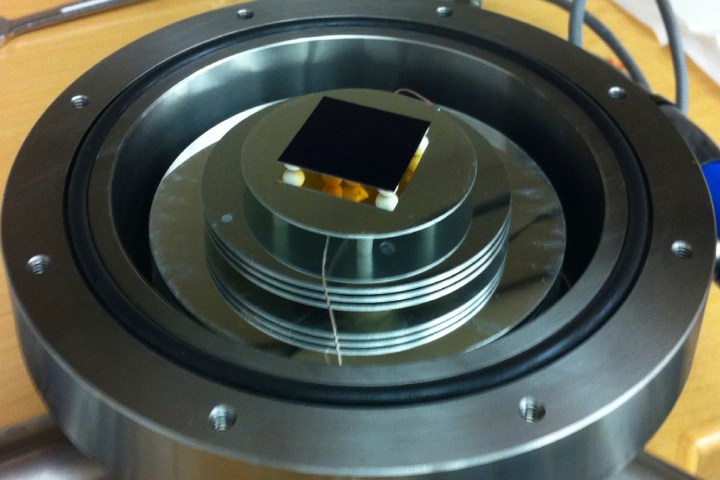
That’s not stopping the good folks at Stanford University, however. In a paper recently published in the journal Nature, Stanford researchers describe a new refrigeration method for providing cooling: simply beam the heat into space.
Referred to as radiative cooling, the process carried out by the researchers used an experimental thermal emitter, a device which gives out more heat than it takes in. Using their method — and isolating the thermal emitter from its surrounding environment to stop heat transfer via conduction or convection — the Stanford scientists were able to lower the temperature of the emitter to 42.2 degrees centigrade below that of the surrounding air.
Impressively, this cooling process took just half an hour to carry out.
The emitter is designed in such a way that it can emit heat at wavelengths which let it travel into the atmosphere without being radiated back.
“Deep space is very cold; it’s only 3 Kelvin or -270 Celsius,” researcher Zhen Chen told Digital Trends.
As such, the idea is that it can act as a giant heat sink. “The key to our work is the atmosphere surrounding the Earth is very transparent between 8-13 micrometers: something called the transparency window,” Chen continued. “Through this window we can dump heat from the Earth into space and cool objects remotely. That’s the basic idea behind this technology.”
It’s fascinating — albeit complex — stuff, but the researchers are excited about its possible use cases. These could include AC-style cooling of buildings, harvesting renewable energy from the university, and carrying out refrigeration in arid parts of the world.
There are still challenges, though — mainly involving the cost of one of the materials, zinc selenide, and the fact that it requires a totally clear patch of sky in order to work correctly. If there are any clouds whatsoever, the heat radiation will bounce back to Earth and nullify the cooling effect.
At present, the researchers are hoping to commercialize the technology through a new startup. Now that’s what we call “cool” Tech.
Editors' Recommendations
- Asimov’s vision of harvesting solar power from space could become a reality
- SpaceX just launched a moon mission that could enter the history books
- SpaceX says it could fly Starship on Friday, but it depends on one thing
- Car-sized object washed up on beach could be space junk
- Could the key to living in space be … a good lighting system?


